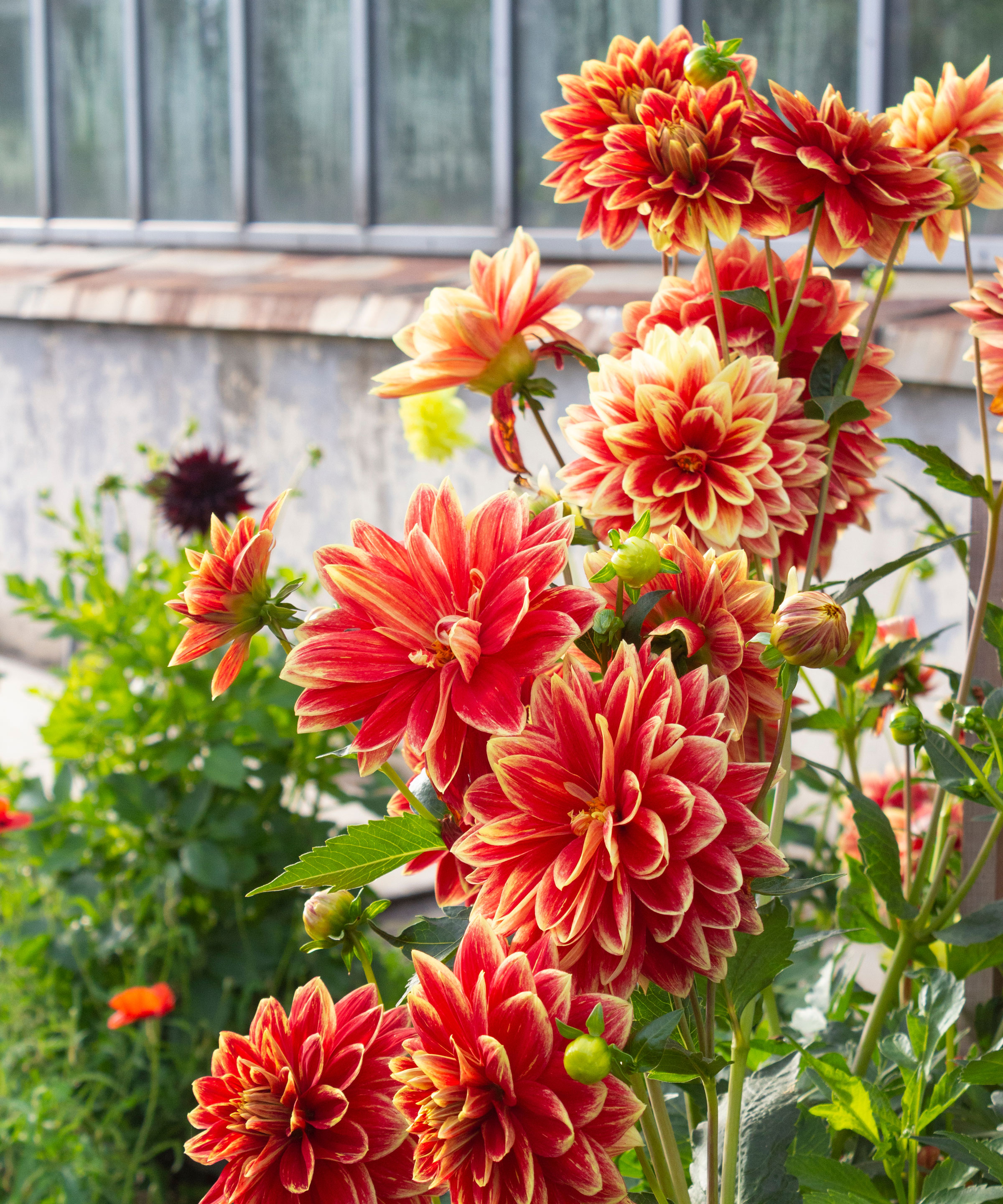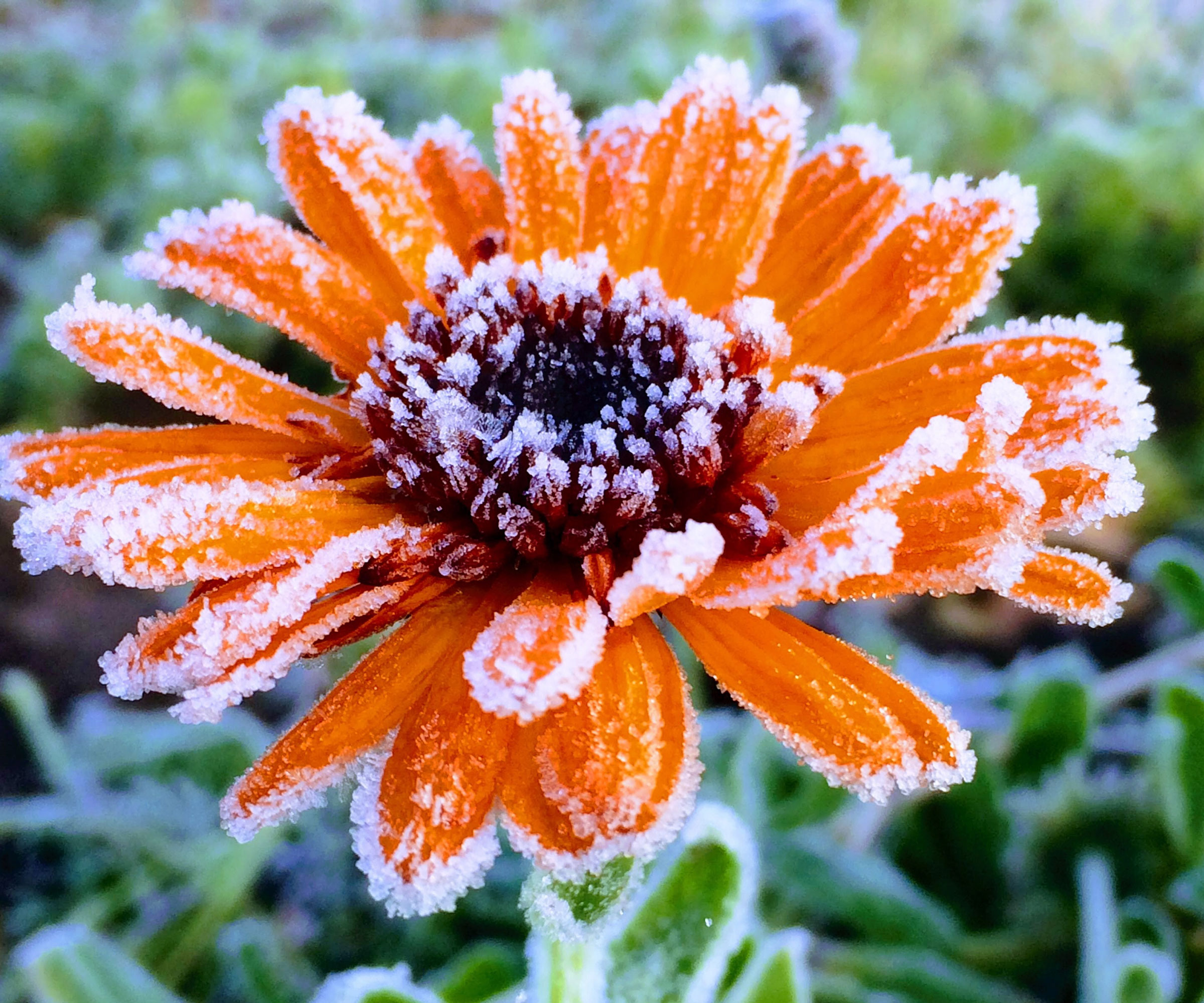Keep Fall Flowers Blooming Into Winter – 5 Frost Delay Tricks so Your Garden is the Last One Blooming on the Block
Flower power doesn't have to end with the first cold snap. Try these 5 simple, actionable steps on how to protect flowers from frost for bonus color that lasts for weeks longer


Amy Draiss
A sudden frost can be ruthless on plants, turning petals limp and faded overnight. Fall frost feels inevitable, but losing your vibrant fall flowers early doesn't have to be. Those blooms deserve a longer run, and I’m here to tell you it is possible. Knowing how to protect flowers from frost is all about good planning, simple protections, and thoughtful choices. By taking simple, strategic actions, you can keep beautiful blooms like zinnias, cosmos and marigolds thriving for weeks longer.
Knowing when the first frost hits helps get a jump on things. It’s also about thinking laterally about your soil and sensible frost-protection measures. Smart watering, effective covering and microclimate tricks can all keep fall displays growing strong. Clever strategies for trapping ground heat and insulating roots give you extra weeks of bonus color – maximizing color much later into the season. So keep floral colors flourishing and fabulous, even when the nights turn crisp. Try these 5 garden tricks to cheat the cold, protect flowers from frost and extend your fall blooming season in style.
Best Ways to Extend the Fall Flowering Season
Frost can hit petals in different ways, turning delicate blooms like dahlias soft and mushy overnight. Tougher fall flowers like pansies might initially hold on, but can start to look beat after a frosty night or two. Light frost nips petal edges, while heavy frost wipes out blooms completely. Freezing can stop growth, telling the garden it’s done for the season. Without some help to protect plants from frost, those fall colors fade fast, leaving the yard empty and dull before it’s time to pack up for winter.
Frost protection for flowers, particularly late flowering plants, is a vital way to sustain and extend blooming vitality. Protecting flowers from frost keeps the yard alive, while letting you soak up the color for a few weeks longer. Just a bit of effort (when planting and during fall) means that not only will you extend fall flower blooms, but in some cases you remove the hassle of replanting next year. A longer bloom season brings more vibrancy for cozy fall displays. Here are 5 simple ways to protect plants from freezing spells and frost snaps to keep fall petals glowing until winter fully settles in.
1. Plan Ahead for the Chill

Before the first freeze warning hits, you need to be ready. Knowing when the first frost is predicted gives you a crucial jump start. Frost damages plants by freezing the water inside their cells. Your preparation starts the minute temperatures are forecast to dip close to 32°F (0°C). This will obviously vary, according to your USDA hardiness zone. You can determine first fall frost targeted to your area by entering your zip code into the Old Farmer’s Almanac calculator for first frost date predictions.
Where you plant makes a huge difference in how long your flowers last. Plant fall flowers in spots that grab morning sun, such as near a south-facing wall or fence that can warm up fast. Planting near structures that absorb and radiate heat help plants recover quickly in the morning, even if temperatures drop overnight. Structures like sheds or tall hedges block chilly winds, helping to delay frost for fall flowers by keeping things a bit cozier at night. A bit of planning here can make a big difference to your garden’s late-season show.
Planting in warm microclimates, like near stone paths that soak up sun, can protect fall flowers from frost without much extra effort when it counts. Where you can, avoid cold pockets. Never plant in low spots or at the bottom of slopes. Cold air settles here first, dramatically increasing the risk of early frost. Choose raised beds or gentle slopes where cold air can easily drain away, giving blooms a fighting chance. If you need to check the state of your soil before planting, use a soil meter like Raintrip’s 4-in-1 Soil Meter from Amazon, which tests for pH levels, moisture and nutrient loads.
Sign up for the Gardening Know How newsletter today and receive a free copy of our e-book "How to Grow Delicious Tomatoes".
2. Hydrate to Insulate Soil

Moisture is your friend when fighting the ravages of cold. The best time to water plants in fall is lightly in the late afternoon, before a frost is expected. Moist soil holds heat much better than dry soil does, creating a thermal buffer around the roots. Be careful not to overwater, though. Soggy roots can freeze fast and rot. Light, even watering is all you need to keep the insulating effect.
If you need to make sure moisture levels are satisfactory, don’t be afraid to test the soil. Again, use a good meter – I like the XLUX Soil Moisture Meter from Amazon which is easy to use and causes minimal damage under ground. You can also utilize DIY ‘heat sinks’ to help insulate the soil. Place dark-colored plastic jugs filled with water in your garden. These absorb solar energy all day and radiate stored heat around your tender plants all night, raising the immediate air temperature slightly.
3. Deploy Protective Mulch

A simple layer of mulch provides critical root protection, whether your plants are in the ground or in containers. To insulate the soil, add a generous layer of organic eco-friendly mulch (such as shredded leaves or wood chips) around your plants. A good mulch, like my personal favorite, Back To The Roots Organic Premium Mulch from Amazon, keeps the soil a few degrees warmer during those chilly fall nights. I also like EZ-Straw Just Straw Bales from Amazon for natural thermal cover.
This sustained temperature regulation helps fall flowers maintain their strength. As well as being a great root regulator, organic mulch is a great way to supercharge your soil by supporting ground nutrients and suppressing weeds. Your mulch of choice will go a long way towards shielding your garden from early frost damage, keeping roots warm enough to hold blooms strong.
Potted flowers are extremely vulnerable if you leave them outside. If you can't move them inside, wrap the sides of the pots with burlap, old blankets or bubble wrap to prevent the entire root ball from freezing solid.
4. Get Ready with Covers and Cloches

When frost is imminent, where you’re still worried that you might be leaving flowers exposed to something they can’t quickly recover from, then a quick covering is the ultimate defense. Grab a frost cloth like Garutom Plant Covers from Amazon ahead of the first fall frost risk, to trap in some heat. Lightweight fabrics let plants breathe while holding in warmth, unlike plastic sheets that trap moisture and cause harm.
It’s important to keep covers elevated, though, so there is a gap between the fabric and the flower. You can use stakes or hoops, or even tomato cages, to elevate covers so they do not touch the foliage and the petals of your fall ornamentals. If the cover touches the plant, the cold will transfer right through and freeze the leaves. A good solution is a fleece tunnel, like the Tierra Garden Haxnicks Giant Easy Fleece Tunnel from Amazon, which keeps a gap while ensuring fall flowers are protected from frost.
Set covers up before sunset to trap the warmth the soil has absorbed during the day. Remove the covers the next morning, as soon as the sun is fully up and air temps rise above freezing to prevent the plants from overheating. If temperatures are forecast to dip below 28°F (-2°C), consider a double layer of material (such as a blanket placed over the frost cloth) to trap an extra pocket of insulating air. Again, make sure these extra layers are well supported and arranged so they don’t smother the plants.
A cloche can also help to protect your flowering plants, especially if they are in containers. However, there are some cloche options that can be placed over ground-based ornamentals. Dulovem Garden Cloches from Amazon protect single plants, keeping them snug against chilly nights.
5. Pick Tough Varieties and Deadhead Relentlessly

It stands to reason that certain ornamentals and fall-flowering plant varieties will be more cold-hardy than others as the temperatures fall away, so searching these out in the first place will give you the edge when you’re counting down the days to the first frosts. Select flowers that are naturally more resilient to cold, such as violas, pansies or snapdragons. These varieties are built tough and keep fall blooms going naturally.
It’s also important to get into the habit of routinely deadheading flowers that flourish during the fall. Done in tandem with other frost protection measures, this simple act pushes the plant to produce new buds, stretching the bloom season and maintaining a vibrant look well into winter, even once frost sneaks in. Great precision tools for deadheading include compact Fiskars Micro-Tip Pruning Snips from Amazon for tight spaces, and Corona ClassicCUT Bypass Pruners from Amazon for thicker stalks.
Finally, one more tip for fall flowers: avoid high-nitrogen fertilizers. Nitrogen encourages tender, sappy growth that is vulnerable to frost damage.

Need more ideas for timely gardening jobs and seasonal expert advice delivered straight to your inbox? Sign up for the free Gardening Know How Newsletter!

Tyler’s passion began with indoor gardening and deepened as he studied plant-fungi interactions in controlled settings. With a microbiology background focused on fungi, he’s spent over a decade solving tough and intricate gardening problems. After spinal injuries and brain surgery, Tyler’s approach to gardening changed. It became less about the hobby and more about recovery and adapting to physical limits. His growing success shows that disability doesn’t have to stop you from your goals.
- Amy DraissDigital Community Manager